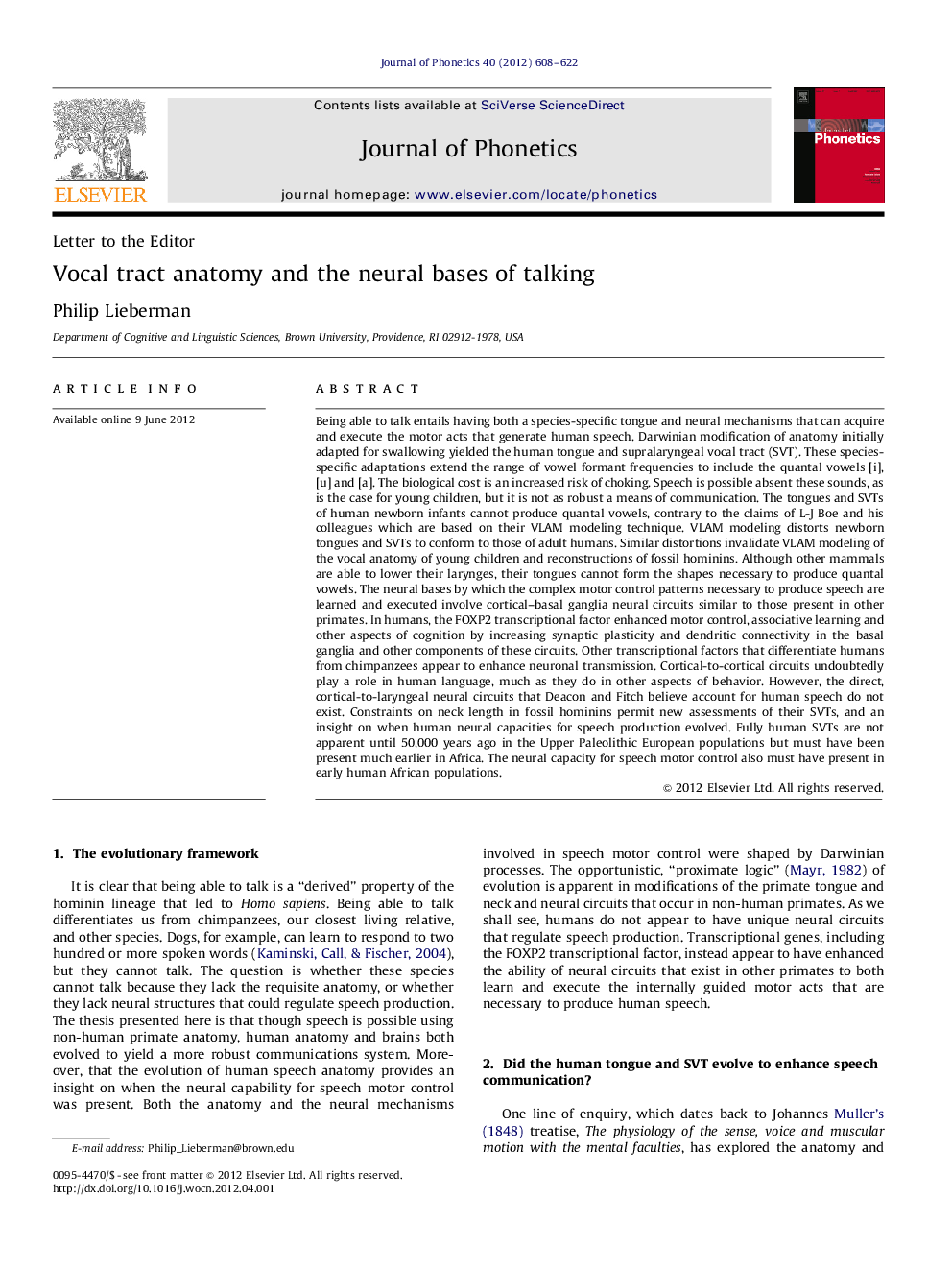| کد مقاله | کد نشریه | سال انتشار | مقاله انگلیسی | نسخه تمام متن |
|---|---|---|---|---|
| 1100819 | 953488 | 2012 | 15 صفحه PDF | دانلود رایگان |

Being able to talk entails having both a species-specific tongue and neural mechanisms that can acquire and execute the motor acts that generate human speech. Darwinian modification of anatomy initially adapted for swallowing yielded the human tongue and supralaryngeal vocal tract (SVT). These species-specific adaptations extend the range of vowel formant frequencies to include the quantal vowels [i], [u] and [a]. The biological cost is an increased risk of choking. Speech is possible absent these sounds, as is the case for young children, but it is not as robust a means of communication. The tongues and SVTs of human newborn infants cannot produce quantal vowels, contrary to the claims of L-J Boe and his colleagues which are based on their VLAM modeling technique. VLAM modeling distorts newborn tongues and SVTs to conform to those of adult humans. Similar distortions invalidate VLAM modeling of the vocal anatomy of young children and reconstructions of fossil hominins. Although other mammals are able to lower their larynges, their tongues cannot form the shapes necessary to produce quantal vowels. The neural bases by which the complex motor control patterns necessary to produce speech are learned and executed involve cortical–basal ganglia neural circuits similar to those present in other primates. In humans, the FOXP2 transcriptional factor enhanced motor control, associative learning and other aspects of cognition by increasing synaptic plasticity and dendritic connectivity in the basal ganglia and other components of these circuits. Other transcriptional factors that differentiate humans from chimpanzees appear to enhance neuronal transmission. Cortical-to-cortical circuits undoubtedly play a role in human language, much as they do in other aspects of behavior. However, the direct, cortical-to-laryngeal neural circuits that Deacon and Fitch believe account for human speech do not exist. Constraints on neck length in fossil hominins permit new assessments of their SVTs, and an insight on when human neural capacities for speech production evolved. Fully human SVTs are not apparent until 50,000 years ago in the Upper Paleolithic European populations but must have been present much earlier in Africa. The neural capacity for speech motor control also must have present in early human African populations.
► The human tongue evolved to produce the vowels [i], [u] and [a], enhancing speech.
► Human infants and other species cannot produce these vowels which make speech more robust.
► The Boe VLAM procedure cannot model the phonetic capacities of infants and other species.
► Neural basal ganglia circuits upregulated by the FOXP2human gene regulate speech and cognition.
► Neck-length provides new insights on Neanderthal and human speech and cognitive capabilities.
Journal: Journal of Phonetics - Volume 40, Issue 4, July 2012, Pages 608–622